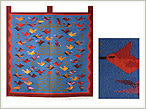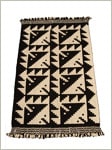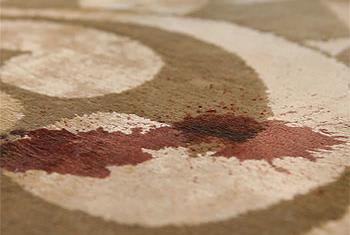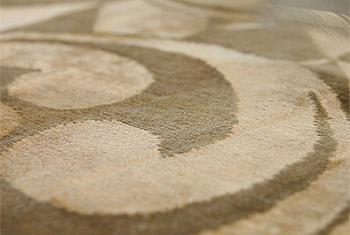
Peruvian Rugs - Legacy of an Extinct Civilization

The Spanish conquest of Peru in 1530 destroyed the Inca Empire, which ruled much of the Andes region in the 1400's and left virtually no written records regarding their civilization. However, textiles found in graves along the Peruvian coast, which were preserved by the high-alkaline soil, prove that earlier civilizations existed. These textiles were used to wrap the mummified dead. Today, the Quechua and Ayacucho Indians continue to produce textiles believed to first have been produced in the pre-Inca era. It is believed that the Quechua culture originated in central Peru at least a thousand years before the rise of the Inca Empire in the early 1400's. Most scholars believe that the Quechua language spread up and down the Andes as a trade language, long before the Inca adopted it.
The chromatic richness of pre-Hispanic textiles demonstrates the ancient Peruvians´ knowledge of dyeing techniques in textile art. They obtained dyes primarily from plants, as well as from minerals and animals. Using these pigments along with a variety of natural-colored cotton fibers and wool, the Peruvians could create a wide range of colors.

The pre-Colombian cultures of the Peruvian Andes expressed themselves graphically rather than with writing. However, they had developed their own very original systems of knowledge and communication, specifically through weaving. The weavings produced allow for skilled craftspeople to reflect their cultural universe in graphic form using simple instruments such as small looms, a variety of yarns and natural colors to represent complex messages. Designs were also produced using images and decorations to portray the myth of Inkari, which describes the birth of the Inca civilization. In the myth, Inkari is decapitated by the Spanish Conquistadors, but his head, considered to represent a seed, was planted by the Q'ero and in turn was then fertilized by the sun, or Inti.
Today, Peruvian rugs weavers are found in communities such as Q'ero, in the highlands of Cusco. Rugs are still woven in the pre-Colombian era style, using alpaca and lamb's wool. Modern adaptations of the mythical designs, based on the same influences, can also be found. Rugs from Ayacucho are made of alpaca and sheep's wool, woven by the renowned families of Huamanga. Using vegetable dyes (as did their ancestors) with varied motifs (birds, butterflies, beetles, flowers and geometric designs), they create textiles inspired by the famous tapestries that the Nazca and Paracas wove, centuries before the Incas.
Special Offers
Quick Contact
Before & After






























